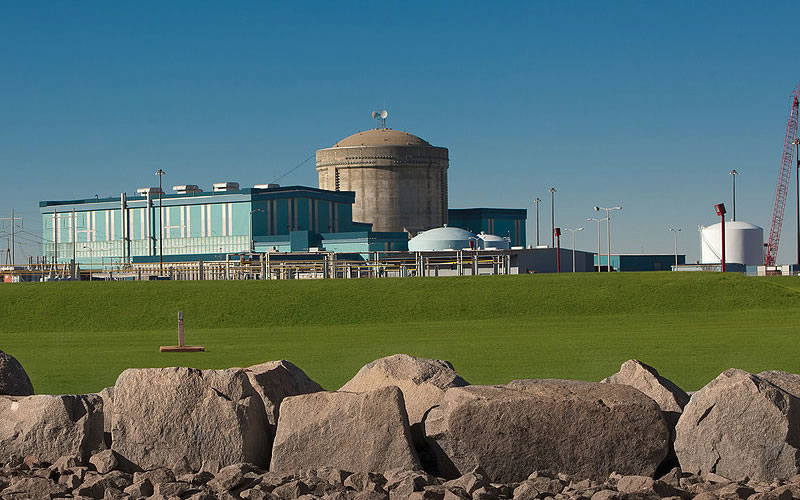
To South Carolinians of a certain age, the only thing more surprising than the recent resurgence of interest in nuclear power is that some longtime environmentalists are now among its biggest boosters.
That would have been unthinkable back in 1979 after the partial nuclear meltdown at Three Mile Island and the nuclear accident portrayed in the award-winning movie “The China Syndrome.”
But given the rapid pace of climate change, a growing number of environmental activists argue that nuclear energy, which has carbon emissions even lower than wind and solar power, will have to be part of the solution. That’s why some now even support Microsoft’s plan to restart the Three Mile Island plant as a way to feed its power-hungry Pennsylvania data centers.

“In my view, we have got to acknowledge that we haven’t done what needs to be done to reduce greenhouse gas emissions,” S.C. Coastal Conservation League founder Dana Beach told the City Paper on Oct. 29. “And nuclear is the one big change we can make to accelerate our progress toward a low-carbon future.”
That said, Beach makes it clear that in an ideal world, nuclear power wouldn’t be necessary, because we would never have allowed climate change to reach a level where the mountains of North Carolina now are a part of Hurricane Alley.
After all, the problem of global warming caused by carbon dioxide emissions isn’t new. In fact, it’s been well understood at the highest levels of the U.S. government since at least 1969, when then-Nixon advisor and later U.S. Sen. Daniel Patrick Moynihan explained it in a one-page memo to the president’s domestic policy chief, John Ehrlichman, with the ominous warning, “Goodbye New York. Goodbye Washington, for that matter.”
But after decades of what Beach sees as insufficient action and ongoing resistance from political and utility leaders, he says the state needs to move forward with the second-best solution of new nuclear power facilities.
“The science and math say that we need to make these changes right away, and that means before we get the good-ole-boys extricated from Columbia and the top management ranks in our utilities,” Beach said. “As [former Defense Secretary Donald] Rumsfeld said, we’re going to have to work with the army we’ve got rather than the one we want.”
The army we’ve got
With the nation’s fastest growing population and new industrial users moving into the state seemingly everyday, South Carolina is facing an energy crunch that utility executives say could lead to rolling blackouts within the next decade.
Two state government panels that will play a critical role in addressing that issue met in October to begin charting a path forward that includes new nuclear energy production. Currently, nuclear power provides 52% of the power on S.C.’s grid – the third highest rate in the country.
On Oct. 15, the Governor’s Nuclear Advisory Council presented a report on its recent site visit to the V.C. Summer Nuclear Generating Station, where two partially-built reactors were abandoned in 2017 when the cost of completing the project was deemed prohibitive by the sponsoring utilities, SCANA Corporation and state-owned Santee Cooper. In the scandal that followed, SCANA was sold to Virginia-based Dominion Energy, several of its executives went to prison and ratepayers were saddled with $9 billion in losses.
But according to committee members, there may be reason to believe the project could be restarted.
“We went down there with the assumption that it was going to be a scene of neglect,” Co-chair Jim Little of Fort Mill told the committee. “But we didn’t see anything during our visit that would say [completing the project] would be precluded.”
In fact, the committee’s report found the site to be in “excellent condition,” and recommended a formal study of restarting the project, particularly in light of the successful recent completion of a similar facility in Georgia.
That idea was then taken up Oct. 16 by an S.C. Senate panel charged with producing energy legislation before the legislature reconvenes in January, where it met with mixed support.

“It is just hard for me to believe that a study of sorts hasn’t already been done by Dominion Energy and/or Santee Cooper when they decided to abandon this plant,” said Democratic Sen. Margie Bright Matthews of Walterboro, noting that a possibly redundant study would be a waste of taxpayer money. “That’s just me thinking. Sorry if I sound conservative.”
But Beaufort Republican Sen. Tom Davis argued the proposal merited further consideration.
“The idea that we wouldn’t look at V.C. Summer [reactor] 2, which is 48% complete with $9 billion in the ground … is unfathomable to me,” Davis said. “I don’t understand the sense of reluctance.”

Key to any future discussions, most senators agreed, would be the extent to which large-scale industrial customers were willing to foot some or all of the bill, as Microsoft is doing at Three Mile Island.
“It seems to me, at the very least, that if [industrial use] is a significant reason for the need for more generation, there ought to be more of a financial burden on those facilities than on the residential customers,” Sen. Majority Leader Shane Massey, R-Edgefield, said.
In the end, committee members agreed to include the idea in draft legislative form for further consideration at a future meeting.
The big question: ‘Who pays’
Despite the broad interest in Columbia, energy experts told the City Paper they remain skeptical of restarting the V.C. Summer project, particularly regarding the price tag.
“We’re agnostic on the technology itself, but more concerned on the timeline and cost, and who pays for it,” said Eddy Moore, a greenhouse gas emissions specialist with the Southern Alliance for Clean Energy.
Like Massey, he thinks industrial users such as data centers should have to pick up a significant part of the tab for any new nuclear projects in the state.
“Georgia and South Carolina are ground zero on this issue [of nuclear cost],” Moore said, referring to the Peach State’s recently completed Vogtle nuclear power plant. “We spent $9 billion and got nothing, and they spent $30 billion and got two power plants. Neither one of those is the outcome you want for residential consumers.”
Still, Moore said, nuclear is a near-zero emission option that’s worth considering – especially if the big industrial players who are asking for it are prepared to pay the bill.
“It’s a different picture as long as the risk is not falling on all the ratepayers,” Moore said.
- Have a comment? Send to: feedback@statehousereport.com.


